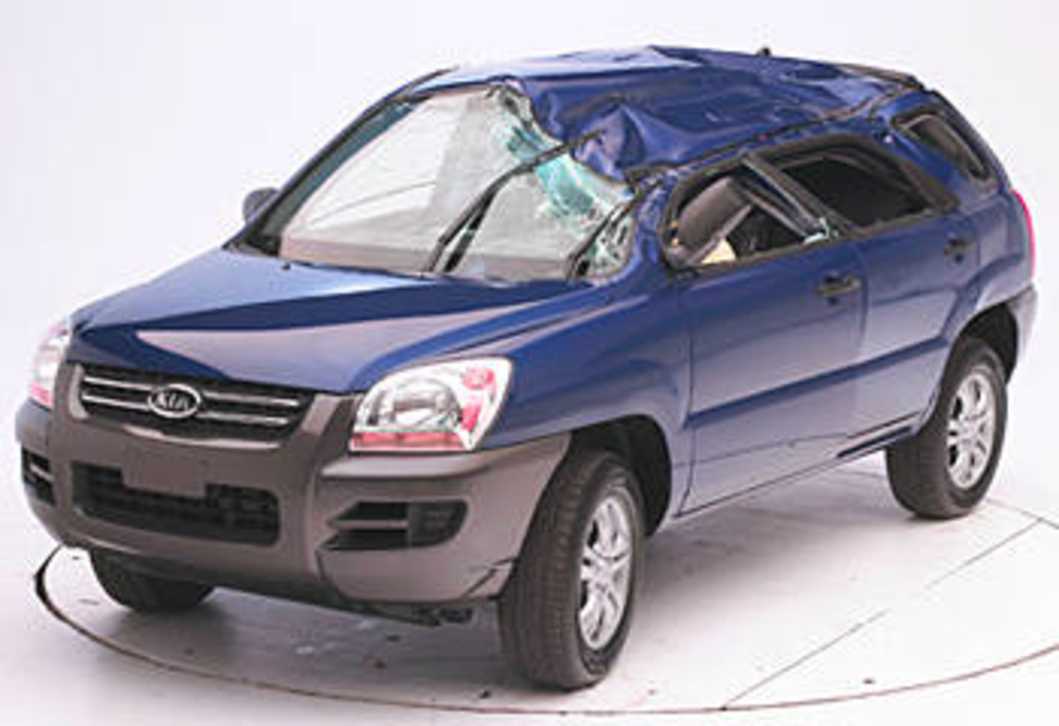Of the 12 off-roaders tested by the Insurance Institute for Highway Safety in the United States just four earned a top rating of ``good'' and three were ``acceptable''.
The tests were designed by the institute to provide new roof strength ratings.
The Volkswagen Tiguan has the strongest rated roof and the Kia Sportage the weakest.
Roofs on the Honda CRV and Ford Escape are marginal, and the Kia's is poor.
The Tiguan, Subaru Forester, Jeep Patriot and a car sold in the US, the Honda Element, earn good ratings.
The Suzuki Grand Vitara, Toyota RAV4 and Mitsubishi Outlander rated acceptable.
The Chevrolet Equinox and Nissan Rogue, both just sold in North America, also rated acceptable.
A spokesman for the Australian New Car Assessment Program and RACV chief engineer, Michael Case, says the US test add another dimension to safety information for new car buyers.
He says ANCAP will be studying the findings.
“The roof crush rating is a useful measure of how the roof will perform in a real rollover,’’ he says.
“Rollover is the next area to go in developing tests and rating vehicles.”
He says ANCAP will need to look at the IIHS process, particularly how to assess it.
The new rating system is based on institute research showing that occupants in rollover crashes can survive better if their off-roaders have stronger roofs.
Vehicles rated good must have roofs that are more than twice as strong as minimum federal safety standards require.
``We anticipate that our roof strength test will drive improved rollover crash protection the same way that our frontal offset and side impact consumer test programs have led to better protection in these kinds of crashes,'' institute president Adrian Lund, says.
The Institute recognises that vehicle roof structures have become stronger over the past few years.
Part of the reason is that carmakers have made structural improvements to earn better front and side crash ratings.
Strong A and B pillars help prevent intrusion in these types of crashes and also help hold up the roof.
``It's not surprising that Volkswagen and Subaru earn good ratings in our new roof test because these carmakers were among the first to ace our front and side tests,'' Lund says.
In the United States more than 10,000 people a year are killed in rollovers.
When vehicles roll, their roofs often hit the ground with considerable force, deforming and crushing.
Stronger roofs crush less, reducing the risk that occupants will be injured by contact with the roof itself.
Stronger roofs can also prevent occupants, especially those not wearing seatbelts, from being ejected.
In the US, about 25 per cent of deaths in car and van crashes are rollovers but in off-roaders this jumps to 59 per cent.
The RACV’s Case says the incidence of rollovers in Australia is lower “but there is still a high chance of death or serious injury”.
In the institute's roof strength test, a metal plate is pushed against one side of a roof near the A-pillar.
To earn a good rating, the roof must withstand a force of four times the vehicle's weight before reaching 12cm of crush.




.jpg)

.jpg)







.jpg)


_0.jpg)


.jpg)







.jpg)

.jpg)
Comments